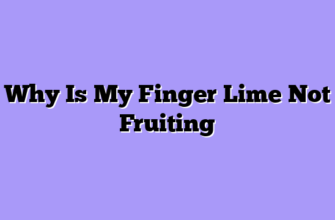Three years ago, if you’d told me I’d be spending my mornings carefully harvesting tiny cylindrical fruits that pop like caviar on your tongue, I would’ve laughed you right off my farm. But here I am, fingers stained with citrus oil, grinning like a fool as I watch chefs from the city drive two hours just to get their hands on my Byron Sunrise finger limes.
Let me back up a bit. I’ve been farming for twenty-three years now, mostly growing conventional citrus—your standard oranges, lemons, the usual suspects. But the market was getting tougher, margins were shrinking, and frankly, I was getting bored. That’s when my daughter, fresh out of agricultural college with her head full of exotic crop ideas, came home talking about something called finger limes.
“Dad, they’re like nature’s Pop Rocks,” she said, bursting one of those translucent little pearls between her teeth. The sound made me curious despite myself.
The Byron Sunrise variety caught my attention immediately. Unlike the more common green or purple finger limes, these beauties develop this gorgeous peachy-pink blush as they ripen—hence the “sunrise” name. The fruit itself is about the size of your thumb, maybe a bit longer, with skin that ranges from green to that beautiful sunset orange. But it’s what’s inside that’ll blow your mind.

Getting started wasn’t exactly smooth sailing. These Australian natives are finicky little things, nothing like the hardy citrus I was used to. They demand well-draining soil—and I mean really well-draining. My first attempt was a disaster because I treated them like regular citrus trees. Wrong move. They hate wet feet more than a cat hates bath time.
I learned the hard way that finger limes are essentially rainforest understory plants. They prefer dappled light, not the full blazing sun I was giving them. After losing my first dozen trees to root rot and sunburn, I swallowed my pride and did what I should’ve done from the start—I studied their natural habitat.
Now I grow them under shade cloth, about 50% coverage, which mimics the forest canopy they evolved under. The soil preparation alone took me three months. I had to create raised beds with a mix that was one part compost, one part sand, and one part perlite. Think of it like making a really expensive potting mix on an industrial scale.
The thorns—oh, the thorns! These trees are basically citrus porcupines. I’ve got scars up and down my arms from my early harvesting attempts. You can’t just grab and twist like with regular citrus. Each finger lime has to be carefully snipped with pruning shears, and even then, you’re playing defense against thorns that seem designed specifically to shred human skin.
But man, when you get it right, it’s pure magic. My Byron Sunrise trees started producing in their second year, which is actually pretty fast for finger limes. The first harvest was small—maybe twenty pounds total—but the quality was incredible. Those little pink pearls were perfect, each one bursting with flavor that made my eyes water in the best possible way.
The real game-changer came when I started connecting with local restaurants. Word spread fast about these “citrus caviar” pearls that could transform a simple dish into something extraordinary. I remember the first time I watched a chef sprinkle my finger lime pearls over fresh oysters. The combination was mind-blowing—the brininess of the oyster followed by that explosive citrus pop. It was like watching fireworks in your mouth.

The funny thing is, I initially worried about the yield. Finger limes don’t produce the volume of conventional citrus, but they don’t need to. I’m getting fifteen to twenty dollars per pound wholesale, compared to maybe fifty cents for regular limes. Do the math—it’s a no-brainer.
Harvesting is still my favorite part. There’s something almost meditative about walking through the grove in the early morning, shade cloth filtering the sunlight into patterns on the ground, carefully selecting fruits that are just perfectly ripe. Too early and the pearls are hard and lack flavor. Too late and they start to lose that magical pop.
These days, I’m expanding my finger lime operation and even experimenting with other Australian natives. My Byron Sunrise trees are thriving, producing beautiful fruit that continues to amaze me. Sometimes I still can’t believe that these weird little sausage-shaped fruits have completely transformed my farm’s profitability.
If you’re thinking about growing something different, something that’ll set you apart from every other farmer in your area, I can’t recommend finger limes enough. Just remember—they’re not oranges, so don’t treat them like oranges. Respect their quirks, give them what they need, and they’ll reward you with something truly extraordinary.
Trust me, once you hear that satisfying pop of fresh finger lime pearls, you’ll never look at citrus the same way again.








